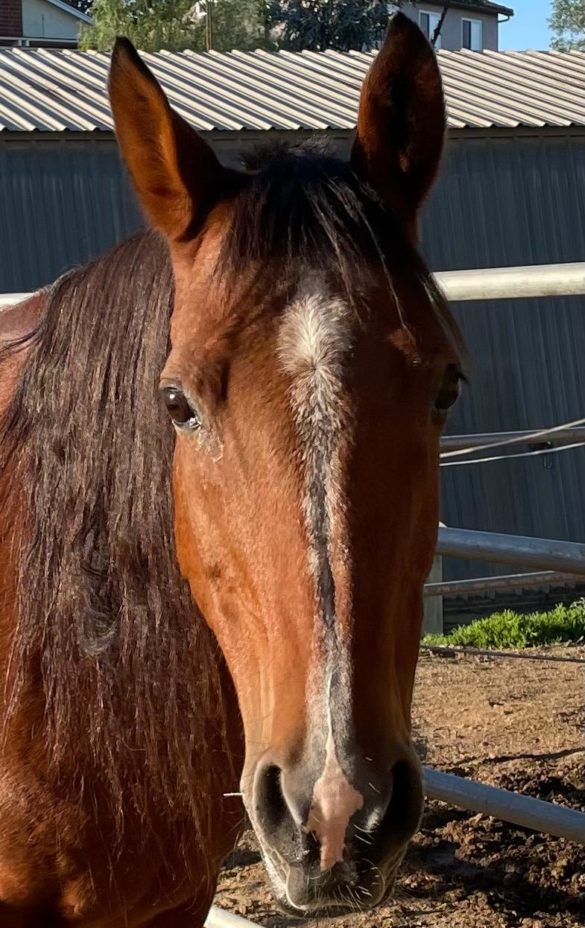The Pleasures of Age
For the past few years it seems that I devote one annual column to age. Before this goes to press, I will turn 81. I can honestly say that so far, this seems to be the best year of my life. First, I survived the COVID isolation; in fact, I turned it into a huge advantage. I used socialization time for organization and disposal of possessions: throwing out paper and giving away clothing and books. Although I still have far more than I need, but having gone through everything at least once, my heirs can finish the job. In addition to reading a biography in French because I couldn’t find it in English — I found it easier to read than “Mann’s Magic Mountain.” I read both novels and non-fiction, and I spent hours watching YouTube videos of horses–mostly horses doing dressage.
Dressage is an ancient form of horsemanship which teaches rider and horse to move together in harmony without hurting either one. The first consideration is the horse. He is not ridden until he is fully grown, somewhere between three and five years of age. From birth, however, he is handled, taught good manners, such as how to walk politely on a lead rope without crowding or running over or dragging or being dragged by his human. He learns to stand quietly when tied: to have his feet trimmed or shod, for grooming, being bathed, or examined by a veterinarian or other human. He learns to lunge: a trainer, using voice and body language, stands in the center of an arena or a round pen and teaches the horse to walk, to trot, and to canter in a circle as well as to stop, to turn around, and to approach and back up from him. He learns how to bend his body to increase his suppleness. He also learns to wear a halter, to wear a bridle, and to wear a saddle. All this is done before anyone will ride him.
His training is far more complex than what I have shown, but the goal is to create a horse who can carry himself and eventually a rider using his body to its best advantage, increasing his suppleness and agility, and keeping his body balanced, which allows the muscles to develop as they would have in the wild. The rider learns to use his body to signal the horse what he should do. It sounds simple; it is not. The dressage horse and his rider must learn a complicated series of subtle signals involving a prodigious memory. The rider needs a strong torso, strong legs and a relaxed body that can follow the horse’s movements while giving him the subtle signals to move certain ways, and to carry himself properly. Ultimately, both should feel joy at moving together, and with the horse able to move in the way nature intended him to move.
I give this detail because it is like learning a new language or like learning a new sport in that new language. I rode horses in childhood, but I had a twenty-year hiatus which ended in my mid-thirties. Then I had a forty-year hiatus which lasted until a few months shy of my 81st birthday. After over a year of watching dressage videos, I became obsessed with it. I bought books. I studied and restudied videos. When a neighbor bought a horse, I grew insanely jealous. She suggested lessons.
I went online and somehow found Elizabeth Johnson, a trainer who was willing to take a chance on giving an old lady her first lessons in dressage. I was in horrible shape. I couldn’t post; I couldn’t sit to a trot; I bounced all over the place. I have a few physical limitations I’ve had forever: scoliosis, a fused spine, collapsed neck vertebrae, and 80-plus years of living. When I got off the horse, I was a sweaty, exhausted mess. I began going to the gym several times a week to improve my strength and stamina. It helped a great deal.
By lesson six, I could post. I am no longer sedentary after a lesson. Suddenly I feel energized. I leave my lesson, clean the house, rake, and weed and water the yard, and then I bake. I have more energy than I had as a child. Not only am I filled with energy, I am so in love with my lesson horse, my fabulous trainer, and the entire sensation of riding again that I float instead of walk. My attemp to learn a new way to ride is an incredible way to stay young and renew my youth.
Perhaps any new activity might have given me new life; renewing an old passion certainly has been doing the trick. That may be the secret to staying young: have a passion and satisfy it. Even if your health is not what it once was, try to find something you love to do. Maybe you want to read or listen to books you never took time to read. Maybe you want to dictate your memoirs for your grandchildren or children. Maybe you used to love archery or bowling. Whatever it is, discover a way to do what you love.
The next meeting of the Mission Hills Garden Club will be a 6:30 p.m. potluck on Wednesday, November 17 at the United Church of Christ, located at 4070 Jackdaw between Fort Stockton and West Lewis Street. Non-members are invited with a $5.00 registration fee; members may register with no charge. Bring portable appetizers in bite sized portions to share. Beverages and desserts will be provided. There will be a plant swamp as well, and Muddily Clay will have ceramics for sale. Nancy Carol Carter, club historian and co-editor of “The Complete Writings of Kate Sessions” will be signing and selling the book. Masks will be required indoors, regardless of vaccination status.

Category: Animals, Covid-19, Health & Fitness, Life Style, Local News







